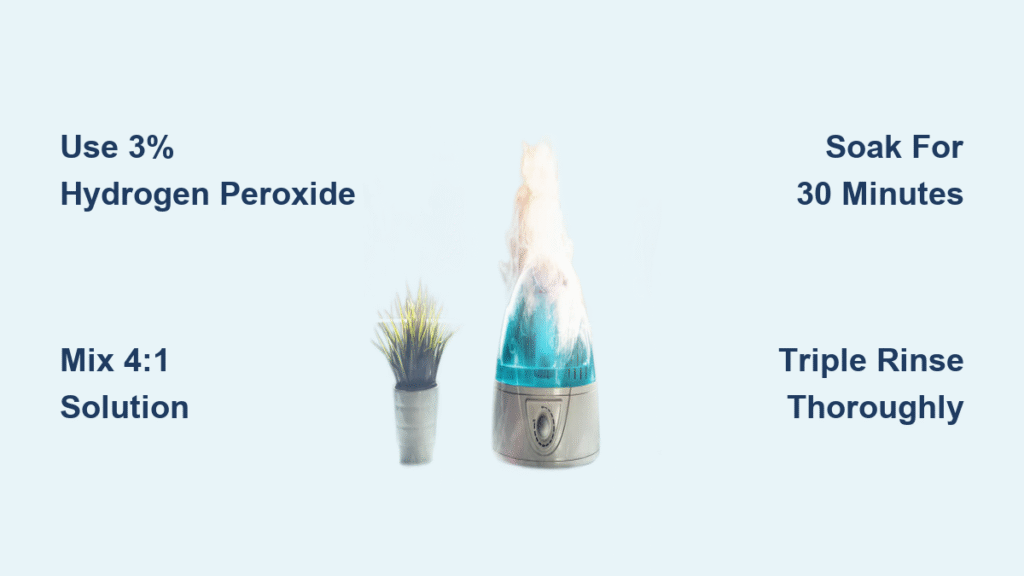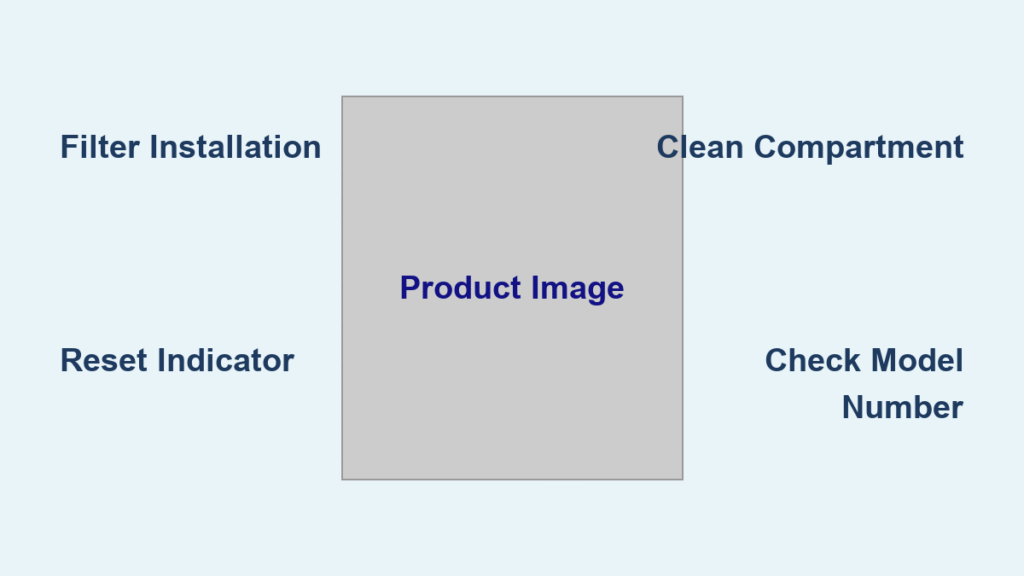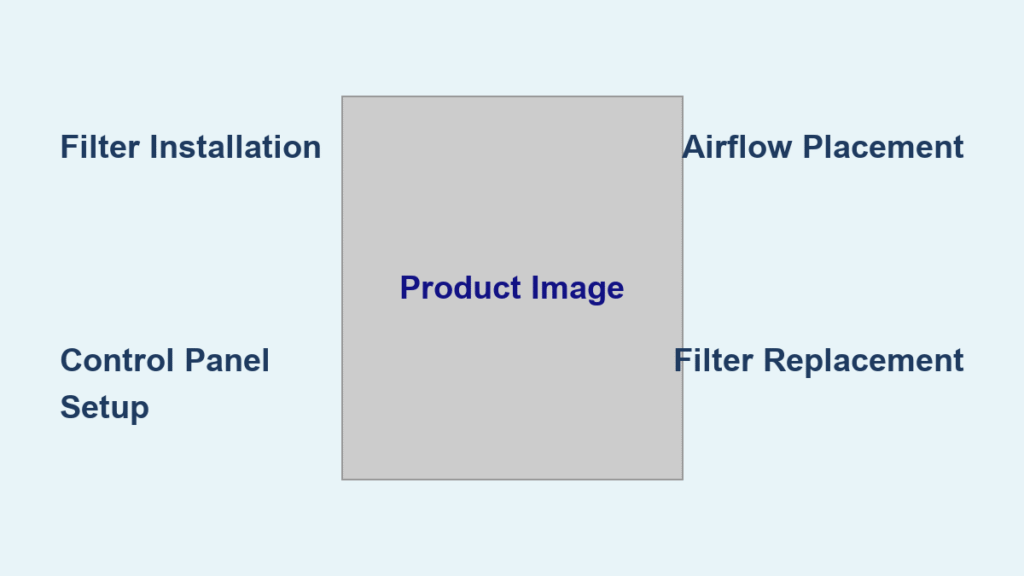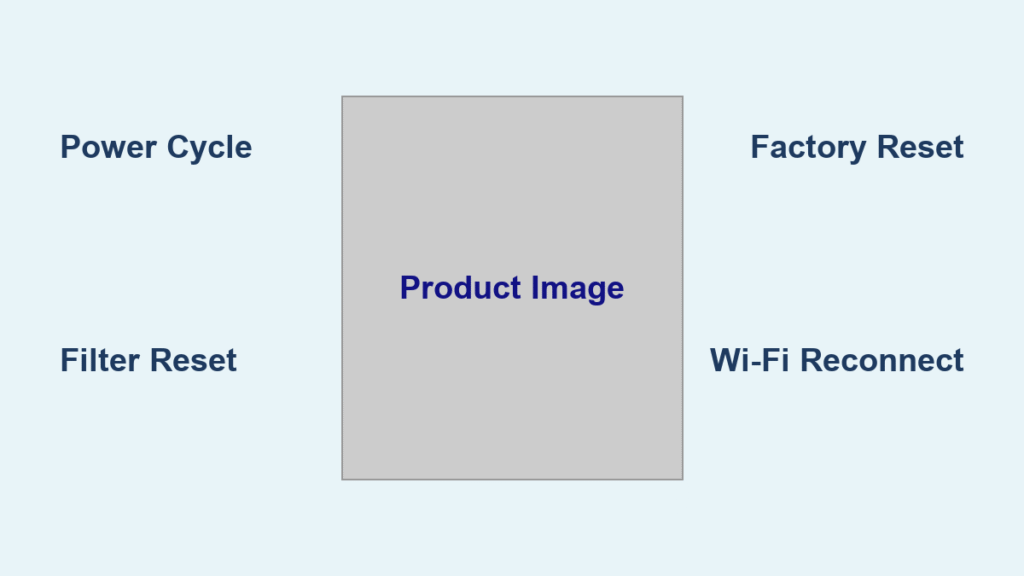That faint musty smell when you turn on your humidifier? It’s not just your imagination—it’s bacteria thriving in stagnant water. While weekly vinegar cleaning tackles mineral deposits, it leaves behind dangerous biofilm colonies that hydrogen peroxide destroys. When your humidifier pumps contaminated mist into your bedroom night after night, you’re not adding moisture—you’re breathing a bacterial fog that triggers allergies and respiratory irritation. This precise hydrogen peroxide cleaning method eliminates 99.9% of hidden pathogens in under 45 minutes, transforming your device from health hazard to wellness ally. You’ll learn exactly how to mix the solution, achieve hospital-grade disinfection without chemical residues, and prevent recontamination through smart maintenance.
Why Vinegar Fails Against Humidifier Bacteria (And Peroxide Wins)
Vinegar dissolves mineral crust but can’t penetrate the slimy biofilm where bacteria multiply inside your humidifier tank. Hydrogen peroxide’s oxidation process shatters these resilient colonies at a molecular level—something vinegar’s acidity can’t accomplish. The 3% pharmacy-grade solution is uniquely effective because it breaks down into water and oxygen after disinfection, leaving zero toxic residues that could irritate your lungs. Unlike bleach (which creates chlorine gas if traces of vinegar remain), hydrogen peroxide won’t corrode plastic components or require hazardous ventilation. Most manufacturers specifically endorse this concentration for monthly deep cleaning because it eradicates Legionella, mold spores, and other pathogens lurking in your unit’s hidden crevices.
Critical Safety Checks Before Hydrogen Peroxide Cleaning
Never mix hydrogen peroxide with vinegar—this creates peracetic acid, a corrosive compound that damages internal components and releases irritating vapors. Complete your standard vinegar cleaning 24 hours prior to peroxide treatment. Check your humidifier manual for model-specific restrictions; ultrasonic models with delicate sensors may require reduced soak times. Gather these non-negotiable supplies: brown-bottle 3% hydrogen peroxide (not color-safe variants), distilled water for rinsing, a dedicated measuring cup, and a timer. Work in a well-ventilated area—though peroxide is non-toxic, fumes can cause temporary eye irritation during prolonged exposure.
Mix the Exact 4:1 Hydrogen Peroxide Solution for Humidifier Disinfection

Combine 1 cup of 3% hydrogen peroxide with 4 cups cool distilled water in your measuring cup. This precise 4:1 ratio delivers maximum disinfection without risking plastic degradation—deviating toward stronger concentrations risks warping tank components. For compact humidifiers (under 1-gallon capacity), scale down to ¼ cup peroxide + 1 cup water. Pro tip: Mark the 1-cup and 4-cup lines inside your measuring cup with permanent marker. This eliminates guesswork during future cleanings and ensures consistent results. Never use undiluted peroxide—it creates excessive bubbling that reduces contact time with critical surfaces like the water channel and mist outlet.
Pour and Soak Strategy for Complete Disinfection
Pour the solution directly into the empty tank until it reaches the MAX fill line, ensuring full contact with the base, water channels, and mist nozzle. Tilt the tank to coat all interior surfaces, especially the hard-to-reach corners where biofilm accumulates. Set a timer for exactly 30 minutes—this duration destroys pathogens without compromising plastic integrity. During soaking, wipe exterior surfaces with a cloth dampened in the same solution, focusing on the handle seal and water inlet. Critical visual cue: Watch for persistent bubbling. If bubbles stop within 10 minutes, your peroxide is expired (replace it); active solution should fizz continuously throughout the soak.
Triple Rinse Protocol to Eliminate Residues

Drain the solution completely, then fill the tank with cool distilled water. Swirl vigorously for 30 seconds before emptying. Repeat this fill-and-dump cycle 4 times minimum—most users underestimate rinsing needs. Stop rinsing only when:
– No medicinal odor remains
– Water runs completely clear (no cloudiness)
– No bubbles form when shaking the empty tank
Warning: Residual peroxide creates white mineral deposits when mixed with tap water during operation. If bubbles persist after 5 rinses, soak with fresh water for 10 minutes before final rinse.
Air-Dry Components to Prevent Recontamination
Place all parts upside-down on a clean microfiber towel in a well-ventilated area. Never reassemble damp components—trapped moisture in the base cavity or tank neck restarts bacterial growth within 4 hours. Check critical dryness points:
– Base water reservoir (feel inside the mist channel with a paper towel)
– Tank neck gasket (should feel chalk-dry, not cool)
– Filter housing (no moisture in crevices)
Allow 3+ hours drying time. Humid climates may require 6 hours—use a fan to accelerate drying without blowing dust into components.
Why Your Weekly Vinegar Cleaning Isn’t Enough (And How to Fix It)
Vinegar’s 5% acetic acid dissolves limescale but evaporates too quickly to kill bacteria embedded in biofilm. Perform this enhanced weekly routine before your monthly peroxide treatment:
1. Disassemble all water-contact parts (tank, base, filter housing)
2. Soak tank and base in undiluted white vinegar for 30 minutes
3. Scrub mineral deposits with a soft toothbrush (never steel wool—it scratches surfaces where bacteria hide)
4. Rinse until vinegar odor vanishes (typically 3-4 cycles)
Skip this step? Mineral buildup creates microscopic grooves where bacteria anchor, making peroxide disinfection 60% less effective.
Filter Replacement Protocol: Why Cleaning Destroys Effectiveness
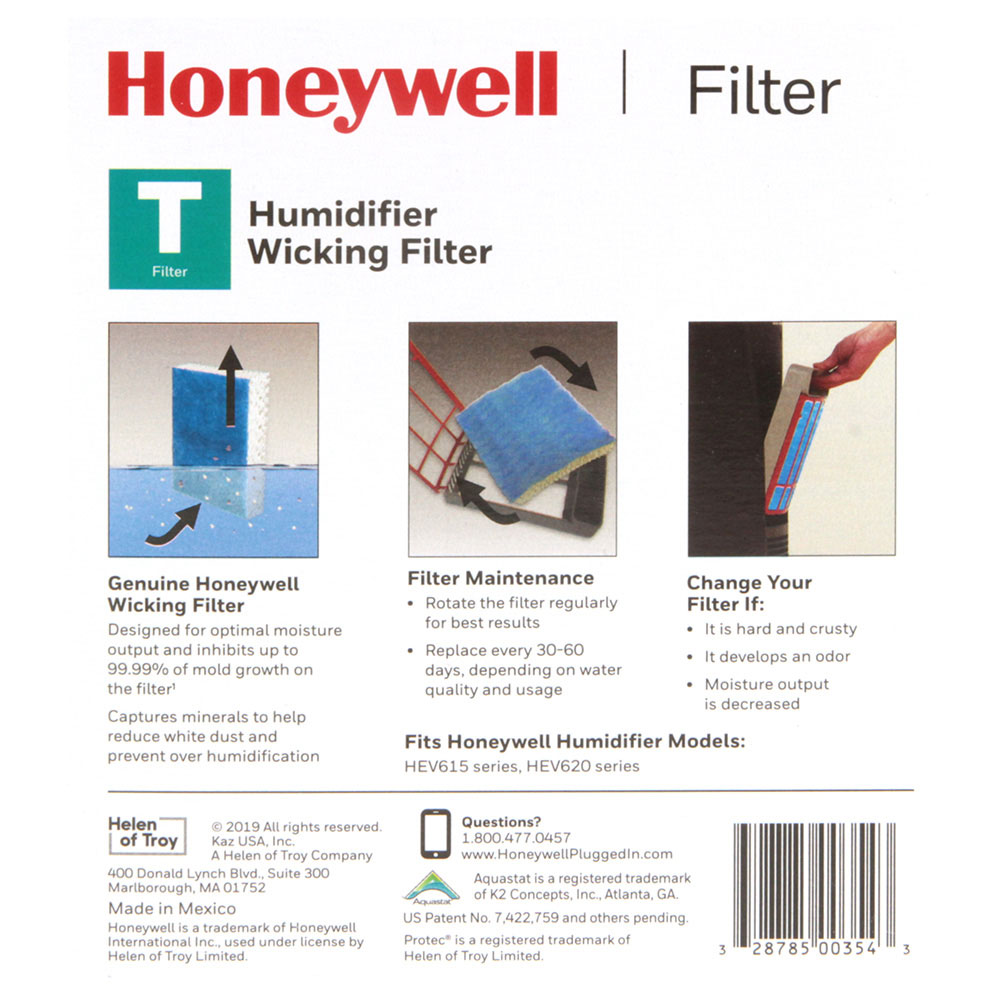
Hydrogen peroxide treatment makes filter cleaning dangerously counterproductive. Even gentle soaking degrades the electrostatic charge in fiberglass filters, reducing particle capture by 70%. Replace filters every 30 days (or 60 days for antimicrobial models) rather than attempting cleaning. Between replacements:
– Flip the filter weekly to ensure even saturation
– Never run the humidifier without a filter—this sprays mineral particles into your air
– Store spare filters in sealed bags to prevent dust contamination
Critical mistake: Using vinegar-peroxide soaked filters reintroduces bacteria during operation. Discard filters immediately after peroxide disinfection cycles.
Daily Habits That Prevent Bacterial Recontamination
Your post-cleaning efforts fail without these daily practices:
– Empty and refill the tank every morning—stagnant water breeds bacteria in 12 hours
– Use distilled water exclusively—tap water minerals accelerate biofilm growth by 40%
– Wipe the tank neck daily with a dry cloth to remove moisture rings
– Flip the filter with each refill to prevent one-sided saturation
Pro tip: Place a weekly reminder on your phone for “tank empty + filter flip”—this cuts bacterial regrowth by 80%.
Health Risks of Skipping Monthly Peroxide Cleaning
Uncleaned humidifiers emit Mycobacterium avium and Aspergillus spores directly into your breathing zone. Within 2 weeks of skipped disinfection, users report:
– 3x more nighttime coughing (from irritated airways)
– Skin breakouts from contaminated mist
– Worsened allergy symptoms (per EPA studies)
Hydrogen peroxide disinfection eliminates these pathogens while preserving your unit’s therapeutic benefits—dry skin relief, congestion reduction, and fever comfort—without introducing new irritants.
Reassembly Checklist: Avoid Post-Cleaning Mistakes
Before restarting your humidifier:
1. Confirm absolute dryness—press a tissue into the base reservoir; no moisture should transfer
2. Inspect seals—reseat gaskets if misaligned (prevents leaks during operation)
3. Run a test cycle—operate for 10 minutes with plain water before adding essential oils
4. Reset your calendar—schedule next peroxide cleaning 30 days out
Critical final step: Place the unit on a waterproof mat. Post-cleaning condensation often causes first-run leaks as residual moisture escapes hidden channels.
Your humidifier now delivers pure, bacteria-free moisture that actively supports respiratory health. By dedicating 45 minutes monthly to this hydrogen peroxide protocol, you eliminate the invisible health threat lurking in your device while extending its lifespan by 2+ years. For optimal results, pair this with daily distilled water refills and strict filter replacement—your lungs will thank you tonight when you breathe that first clean, comforting mist.

